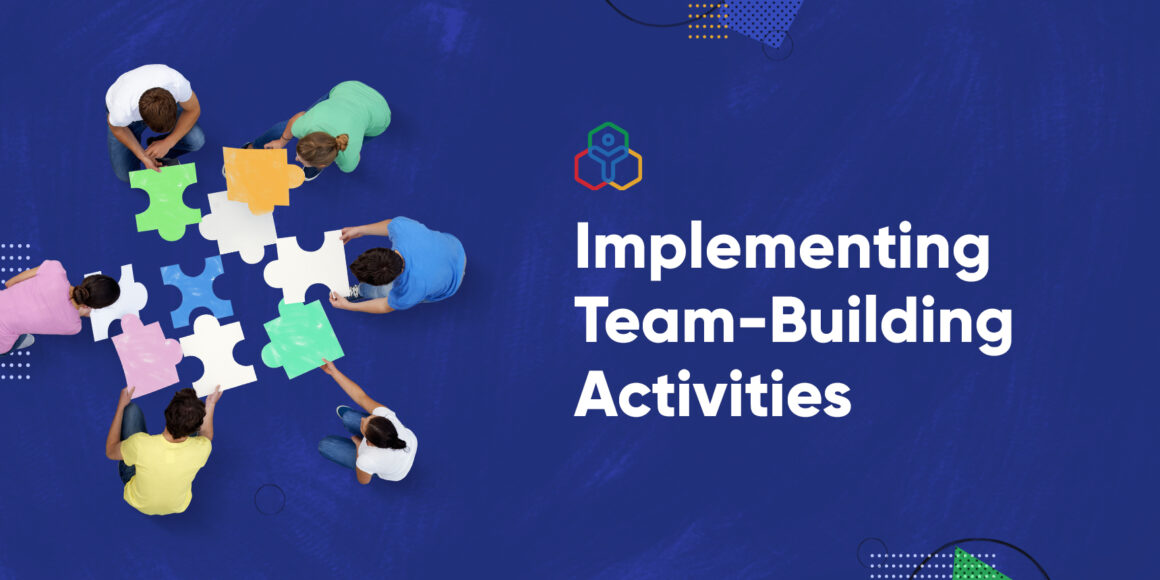- HOME
- HR insights
- Building stronger teams: How to plan and implement a great team-building program
Building stronger teams: How to plan and implement a great team-building program
- Last Updated : August 23, 2023
- 6.5K Views
- 5 Min Read

We have all had our experiences with fun activities at work. Some are engaging, others are boring or completely off the mark. However, the goal is always to bring a greater sense of teamwork and collaboration to the organization in a casual way. Team-building activities are often misunderstood as a waste of time and money, but if they are done right, these activities can promote a positive and productive work culture. It’s just that getting it right is a challenge. Every team is different, so your team-building program must adapt to those differences.
Last time, we listed 15 of the best and most cost-effective team-building activities. Now, we’re going to discuss how to set up a team-building program that gets the results you’re looking for.
Understanding team-building
They say that teamwork makes the dream work. However, merely working with one another is not enough to build great teams. Teamwork happens only when each individual in the team collaborates seamlessly, understands and communicates through conflict, and acknowledges a shared goal. That is where team-building initiatives help. They create a sense of oneness and psychological safety within the team.
86% of employees and executives cite lack of communication or collaboration for workplace failures.
Source: Salesforce
The reason some teams are more successful than others comes down to how individual personalities combine to create a team dynamic. The manner in which they communicate, their energy levels outside of official meetings, and how work itself is done within a team—it’s all important. Each team has unique characteristics, and it’s crucial to understand them in order to build and execute effective team-building programs.
Identifying team characteristics
The trust factor
In your organization, what is the level of psychological safety an employee feels with their teammates? A team will be more successful if there is a strong sense of trust and mutual respect between members. Start fostering this by conducting surveys or simply asking employees how they’d like to improve trust in the workplace. You can also analyze the rapport within the team and how they respond to conflict.
The personality mix
Each team is made up of unique individuals who are bound to have their own opinions, leading to possible conflict. Analyze how agreeable your team is, and watch how they brainstorm, communicate their different ideas, or receive constructive feedback. Come up with a broad list of the top five traits your team has to better and craft a team-building program.
The decision-making
Study how your team is making crucial decisions. Is it a top-down approach? Is everyone in the team accepting the final decisions without questions or concerns? It’s important that every member of a team feels free to voice their thoughts. When employees are open with their opinions, it helps you draft a team-building plan that doesn’t depend on guesswork but rather caters to your employees’ specific desires and needs.
The secret to success?
Create and stick to a goal.
Now that you have an overview of your team’s different traits, the next step is to plan how your team-building program will operate and what exactly its aim is. It could be to improve collaboration, build trust, encourage creativity, or increase productivity. Ensure you create team-building activities that center around these goals, making it easy to track your success rate. However, it’s also important not to get too strict with the objectives and forget about simply relaxing and having fun.
Go big or go small—What’s the budget?
Team-building is not always about fancy dinners, flamboyant parties, or outdoor games. Though these are nice to have occasionally, they can put a big hole in your pocket. Something as simple as an office dance time, a quick 10-minute game, or lunch together as a team can be as effective as big events. Millennials especially are not fond of big team-building activities. They prefer simple events that feel organic and not forced.
If you’re just starting out with team-building activities, then start small. Set a realistic budget and try activities like back-to-back drawing for newbies or a quick jigsaw puzzle to increase collaboration. These would probably just take around 10 to 15 minutes per day or week. Analyze how these activities are contributing to the intended goal. Are there any improvements? Any room for change? Trying out small initiatives lets you have a better understanding of your team, giving you the insight and confidence to host larger events.
Don’t go overboard!
If you’re planning on huge team-building activities like a fancy party or free camping, it’s first important to know how far is too far so you can avoid repercussions. If your organization has the revenue to support these initiatives, then ensure you choose activities that don’t just burn your budget but give the best ROI.
Best practices
Plan a schedule
It’s easy to get carried away with fun initiatives, and doing too many can start to become bothersome to your employees. Set a schedule, either every day, once a week, or twice a month. We would recommend a weekly activity that doesn’t intervene much with routine work.
Choose activities that click
Not every team-building exercise is going to work. Choose activities that resonate with your team and goals. Make sure they aren’t too childlike and match the experience and skills of your team members. Keep in mind the size of your team and how you would react to a particular activity if you’re a part of it. Are you bored? Excited? Feel it’s a waste of time? Putting yourself in your employees’ shoes is the best way to go about planning team-building exercises.
Set a timeline
Decide what team-building exercises you want your teams to participate in. If they’re small, in-office activities, then they shouldn’t take much time to plan and execute. If they’re large team-building activities, give yourself the time you’ll need to purchase materials, choose the venue, transport your team, and execute the event.
Walk the talk
It’s vital that company leaders participate in the activities. Seeing the fun filtering from the top down will motivate employees. Expecting them to participate first without leadership involvement can make even the best activity seem unnecessary. When leaders put in their 100%, it doesn’t just impact that particular team or activity. It translates throughout the whole organization.
Stay consistent
The most important aspect of a team-building program is to stay consistent. No matter how much money or time you spend, you can’t reap the benefits if these ideas are not practiced consistently. It will likely become too boring to follow the same exercise over a month. Try changing activities or creating new and engaging initiatives every month.
Wrapping up
Tens of thousands of research studies have gone into analyzing high-performing teams. The core idea is that teams succeed best when work is done cohesively with everyone striving towards a common goal. Team-building exercises reinforce the ideas of successful teams in a fun and leisurely manner. Most importantly, team-building activities don’t preach but instead encourage employees to participate and learn. If such exercises can bring even a little more success to your team, it’s worth the shot!
 Princy
PrincyProduct Marketer at Zoho People.


